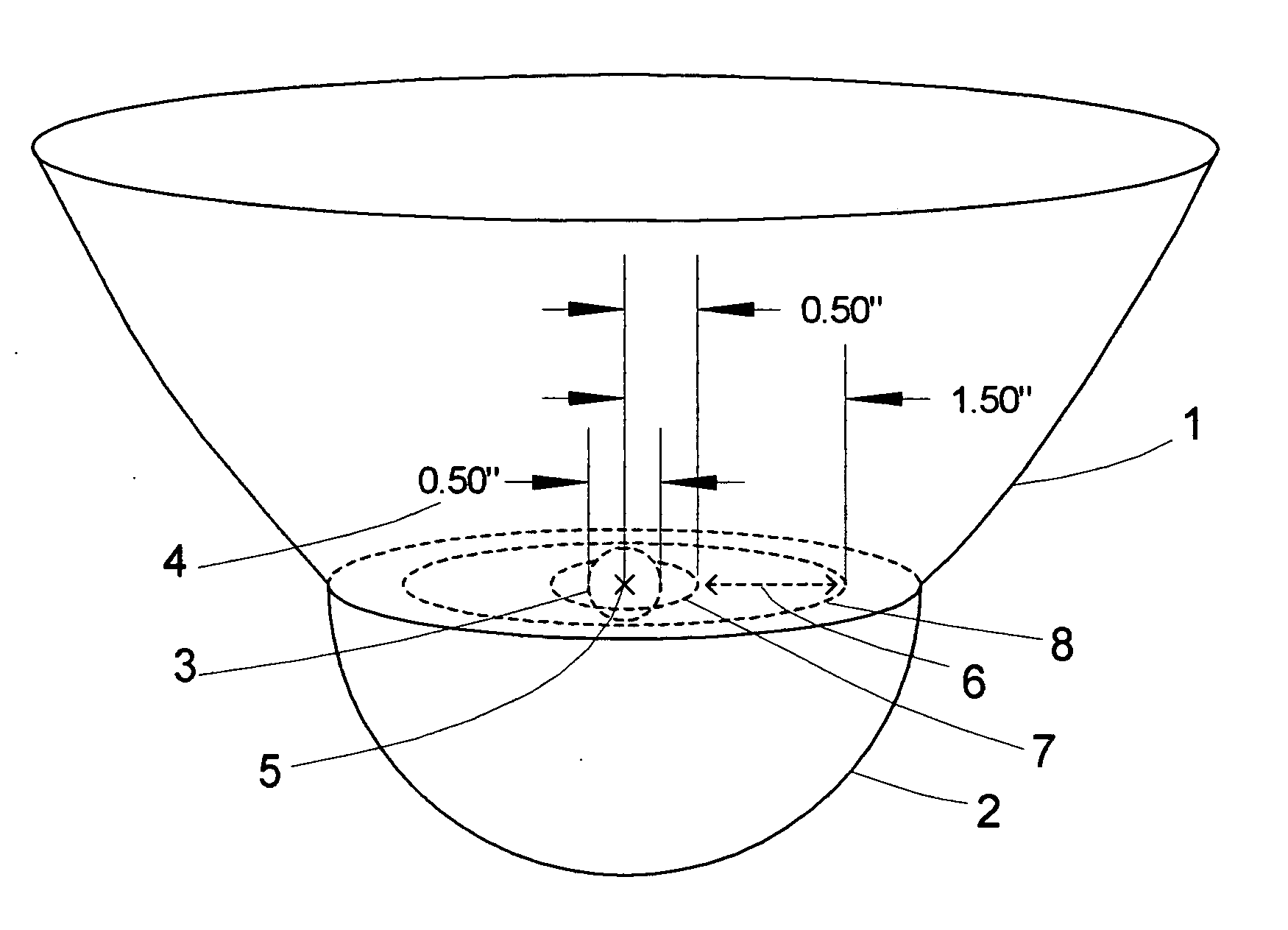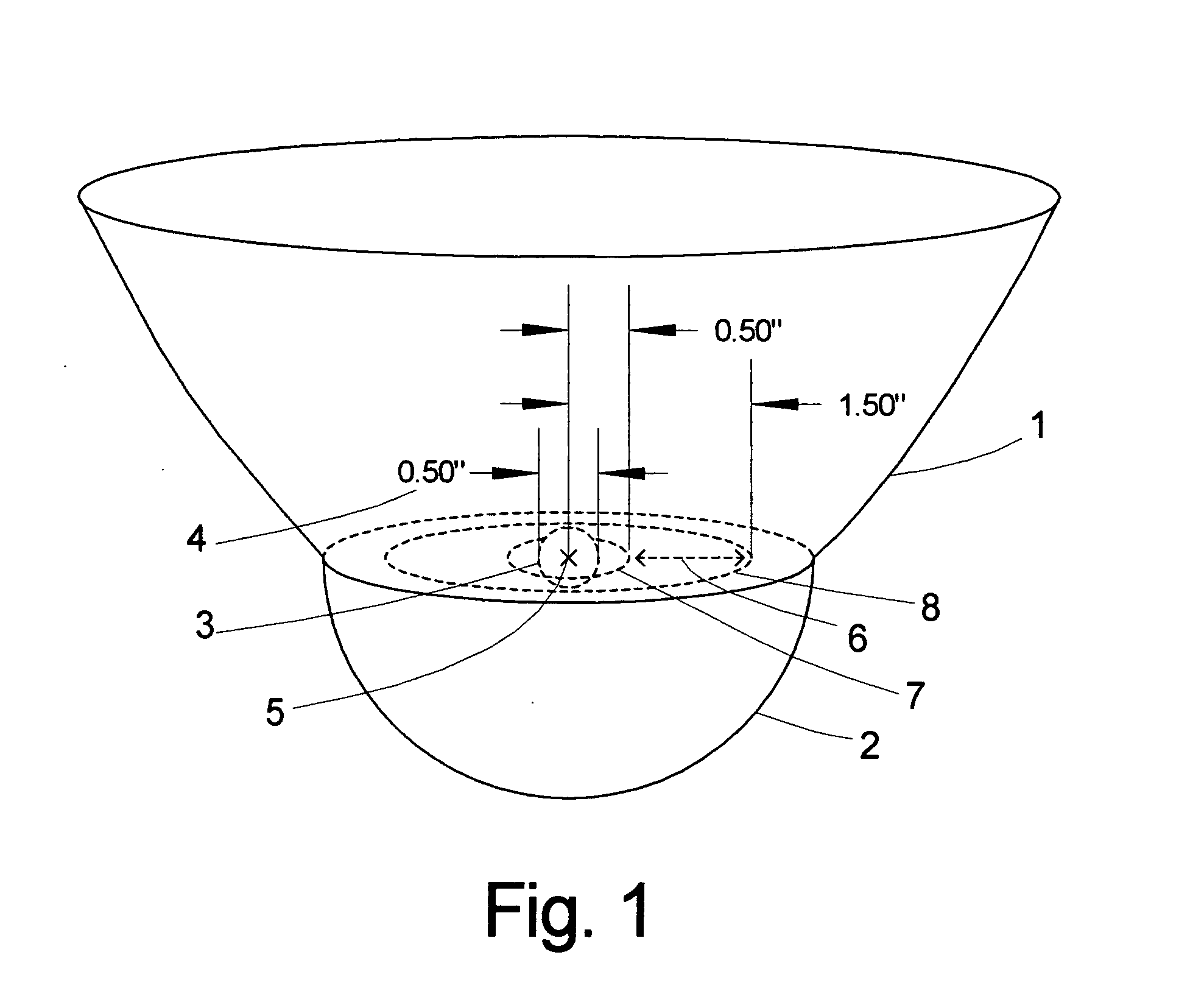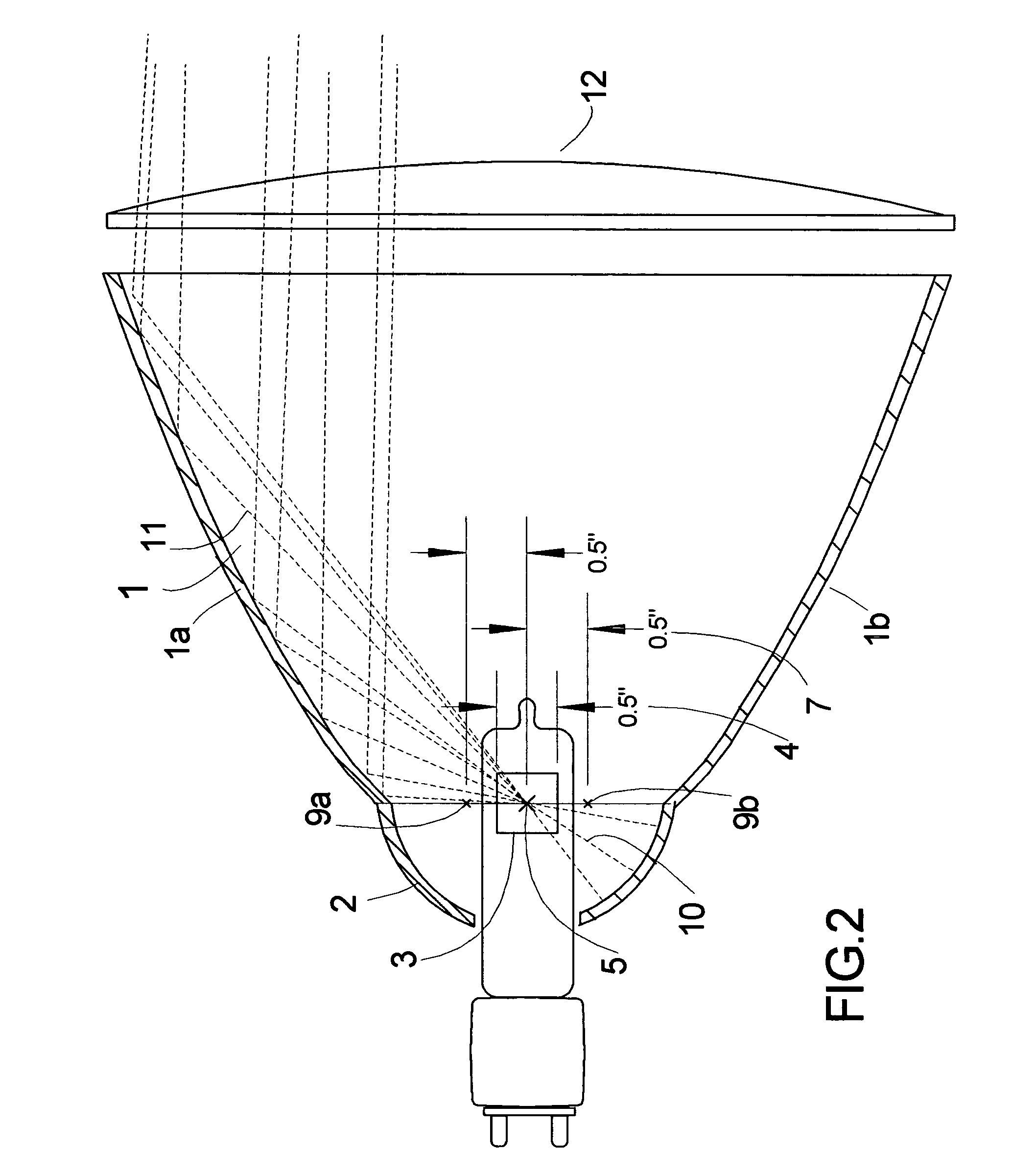Reflector lamp or illumination system
a technology of reflector lamps and illumination systems, which is applied in the field of reflector lamps, can solve the problems of increasing the depth of the reflector, increasing the cost, weight and awkwardness of use, and complicating the positioning of the light source in the reflector system, so as to improve the optical efficiency, reduce the concentration of heat, and save energy
- Summary
- Abstract
- Description
- Claims
- Application Information
AI Technical Summary
Benefits of technology
Problems solved by technology
Method used
Image
Examples
Embodiment Construction
[0026]Reference will now be made in detail to the present preferred embodiment of the invention, examples of which are illustrated by the accompanying drawings. While the invention will be described in connection with a preferred embodiment, it will be understood that it is not intended to limit the invention to that embodiment.
[0027]FIG. 1 is a dimensional diagram of a first embodiment of a reflector system in accordance with the invention. The internal hidden objects are displayed as dashed lines. The reflector has a parabolic front section 1 and a spherical rear section 2. The light source 3 is located at the focal point 5 of the reflector system and has a width of 0.50 inches 4. The focal point used to produce the exact curve for the front parabolic section 1 is a ring of continuous points that is located horizontally outwardly from the reflector system longitudinal axis in a range 6 with a radius of not less that one times the width of the light source, which in this case is 0....
PUM
| Property | Measurement | Unit |
|---|---|---|
| Angle | aaaaa | aaaaa |
| Angle | aaaaa | aaaaa |
| Angle | aaaaa | aaaaa |
Abstract
Description
Claims
Application Information
 Login to View More
Login to View More - R&D
- Intellectual Property
- Life Sciences
- Materials
- Tech Scout
- Unparalleled Data Quality
- Higher Quality Content
- 60% Fewer Hallucinations
Browse by: Latest US Patents, China's latest patents, Technical Efficacy Thesaurus, Application Domain, Technology Topic, Popular Technical Reports.
© 2025 PatSnap. All rights reserved.Legal|Privacy policy|Modern Slavery Act Transparency Statement|Sitemap|About US| Contact US: help@patsnap.com



